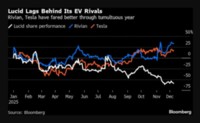The Dog That Does Not Bark but Packs a Big Bite: Services in the U.S. Economy
Remarks before the U.S.–China Business Council, the Coalition of Service Industries and the American Council of Life Insurers
Washington, D.C.
May 14, 2007
Peter Ustinov, the great actor, used to chide the British foreign service by saying he was “convinced there is a small room in the attic of the Foreign Office where future diplomats are taught to stammer.” We do not stammer at the Fed, but we have been known to mumble on occasion. In most central banks, there has traditionally been a premium paid for being opaque.
Alas, obscurity is not our privilege in the reality show that is today’s financial world.
The conduct of monetary policy is inherently a forward-looking exercise: The Fed sets policy with the goal of holding future inflation at a reasonable minimum while helping economic activity and employment grow at maximum sustainable rates. To do so, the Fed must consider both current and expected inflation and growth. A certain degree of transparency and clarity helps increasingly sophisticated business and financial market operators manage risk. Mindful that our actions and deeds condition the expectations of risk takers, it makes sense for central bankers to provide context for our decisions.
This evening, I would like to give you a little perspective from my perch at the Dallas Fed. I would like to talk, hopefully with nary a mumble nor stammer, about the service sector and what I consider the consequences of having services, rather than manufacturing, as the driving force of our economy. These views are my own and, I hasten to add, do not necessarily reflect the views of my colleagues on the Federal Open Market Committee.
First, let me give you some facts to set the stage. America’s economy is a behemoth. In 2005, the Dallas district of the Federal Reserve System—all of Texas, 26 parishes in Louisiana and 18 counties in New Mexico—produced 25 percent more output than India in dollar terms. The Twelfth District, headquartered in San Francisco and overseen by my colleague Janet Yellen, produced more output than all of China. The 140 million workers in the United States produce over $13.2 trillion in economic output; 82 percent of those 140 million workers are employed in the service sector, producing 70 percent of our GDP.
Over the decades, the inexorable forces of capitalist evolution have shifted our economic base from agriculture to manufacturing and now to services. The iconic economist Joseph Schumpeter wrote that “stabilized capitalism is a contradiction in terms.” The transformation of the American economic landscape over time is testimony to our ability to harness our innovative, educated and entrepreneurial culture to master—rather than be victimized by—the instability that is inherent in capitalism. Since the first risk takers arrived on the shores of Virginia and at Plymouth Rock, it has been in our DNA to climb up the value-added ladder. A little history:
* Two hundred years ago, over 90 percent of the U.S. workforce was in agriculture. By the end of the first decade of the 20th century, that share had shrunk to 37 percent of the workforce. Today, less than 1.5 percent of America’s labor pool works on farms and ranches—yet we are producing an agricultural abundance.
* Two hundred years ago, 4 percent of our labor force worked in industry, which includes manufacturing, construction and mining. By 1900, the figure had grown to 28 percent, on its way to peaking at around 38 percent in the 1950s and ’60s. Today, traditional industry employs just 16 percent of our fellow workers—and we’re producing more goods than ever.
* Two hundred years ago, 4 percent of the workforce was in services. The percentage of service workers has steadily grown, reaching 26 percent in 1900, passing 50 percent in the 1950s and, as I mentioned earlier, employing 82 percent of our workforce today.
Let me put these numbers in perspective for you by contrasting them with China. Today, about 44 percent of China’s working population is still in agriculture, compared with America’s 2 percent. Employment in the Chinese industrial sector is 23 percent, compared with our 16 percent. China’s service sector employs a little bit more than 30 percent of China’s laborers, compared with our 82 percent. In other words, China’s labor distribution between agriculture, industry and services is about the same as ours was in 1900.
Since the demise of Mao, the Chinese have made great strides in improving their education system. They are producing graduates in prodigious quantities. And yet they are a long way from having the quality educational system needed to produce trained workers capable of rivaling ours. Around 15 percent of China’s population aged 25–65 has a high school degree, compared with 85 percent in the United States. One of every 20 Chinese in that age group has a college degree, compared with one in three in the U.S. In China, 700 people out of every million are R&D researchers. Here, that number is at least 6.5 times higher.
And in terms of wealth, it is interesting to note that China’s real GDP per capita is roughly 1/25th the size of ours, about the same level as what the U.S. achieved over a century ago.
Our per capita wealth has grown as we’ve moved up the value-added ladder. Generally speaking, our highest paying jobs are in services—engineers, scientists, computer systems analysts, stock brokers, professors, doctors, lawyers, dentists, CPAs, entertainers and other service providers, to say nothing of the mega-compensation paid to hedge fund managers and financial engineers.
Beginning in 1993, the average wage for private services employees surpassed base industry wages. By 1999, all nonretail services employees, even public service employees like government workers and teachers, were averaging more pay per hour than industrial workers.
The destructive side of the process of capitalism’s “creative destruction” is evident in the numbers as old professions give way to new, higher-paying ones. The number of U.S. farm laborers decreased 20 percent between 1992 and 2002. In the same 10-year time frame, employment of telephone operators decreased 45 percent. That of sewing machine operators decreased 50 percent between 1992 and 2002. This is not ancient history; this all occurred within a time frame that is fresh in the memory of everyone in this room.
Yet within that same time frame—between 1992 and 2002—the number of architects grew 44 percent, legal assistants 66 percent and financial services employees 78 percent. Today, there are nearly a million webmaster jobs, a category that didn’t even exist until the early 1990s. The creative side of creative destruction has replaced lost jobs in declining sectors with new ones in emerging sectors.
Since 1992, the goods-producing sector has seen its share of nonfarm payrolls fall by 3.9 percentage points. However, the losses have been more than offset by job gains in just three service sectors—professional and business services, health care, and leisure and hospitality.
Today, manufacturing employs one of 10 U.S. workers, about the same number as the leisure and hospitality sector. One in 20 works in construction—fewer than in financial services. Nearly the same number of people work in government as in the goods-producing sector as a whole. In the past year, the number of manufacturing jobs shrank by 1 percent. In contrast, employment grew by around 3 percent in education, health care, and leisure and hospitality and by over 5 percent in professional services.
Here is a statistic that about beats all: At the end of 2005, the U.S. auto and auto parts manufacturing industry employed about 1.1 million workers and added 0.8 percent of the value to our GDP. The legal services sector employed nearly the same number, but contributed 1.5 percent of the value added to GDP. I will resist the temptation to make a lawyer joke because this is no laughing matter to economists: The legal services industry provides as many jobs as auto manufacturers but contributes nearly twice the value-added to our economic output.
I think you get the point: The service sector, not autos and other forms of traditional manufacturing, drives our economy. And will continue doing so.
Looking forward, the Department of Commerce projects that the fastest growing jobs between now and 2014 will be among general managers, health care workers, postsecondary teachers, retail salespeople, customer service reps and other service providers. In contrast, among the jobs with the greatest projected decline will be textile plant workers, machine operators, farmers and ranchers, meter readers, computer and telephone operators, typists, couriers and, to the relief of all families who like to sit down to supper undisturbed, telemarketers and door-to-door salespeople.
The shift of jobs away from the goods and lower-value-added service sectors to higher-end services is not a new phenomenon. Indeed, it is part of a longer term trend of employment moving to sectors that produce for an increasingly wealthy country, meet the health care needs of our aging population, and provide U.S. employers with the highly trained and flexible workers they need in a broader, more accessible global economy brimming with unskilled labor.
As people get richer, they shift their spending toward relatively more services. Evidence can be found in the buying patterns of U.S. households, in the historical timeline of the U.S. economy and in nations around the world. For every dollar Americans spend on goods, we spend $1.70 on services—roughly a 60 percent mix in favor of services. In contrast, China spends 58 percent of its consumption on goods versus 42 percent on services. In even poorer India, services represent just 37 percent of spending—the reverse image of the U.S.
In 1979, I was a young member of the U.S. delegation President Carter sent to China to settle the claims left after Mao’s government seized the railroad rolling stock we had lent Chiang Kai-shek. President Nixon had normalized political relations in the early 1970s, but it fell to President Carter to normalize economic relations and finally raise the flag at the U.S. Embassy.
So that we could begin to trade with each other and get on with a normal relationship, Treasury Secretary Michael Blumenthal was dispatched to negotiate with Deng Xiaoping. I was Blumenthal’s assistant, so I accompanied him to all his meetings with the Chinese leader. I will never forget our first meeting with Deng. He was electrifying. You may remember he was a short fellow—barely 5 feet, if memory serves—but he was a giant of a man with big dreams. In our first meeting, he entered the room and cackled, “Where are these big American capitalists I am supposed to be so afraid of?”
He then laid out his vision of driving China down “the capitalist road,” a plan he did not proclaim publicly until later. Deng told us then that he would unleash the Chinese genius and focus it on development and modernization. To him, when it came to ideologies, it didn’t “matter whether it is a yellow cat or a black cat, as long as it catches mice.”
We all know the Chinese have caught economic mice in droves. Since 1979, China reports having grown at better than 9.6 percent a year, adding up to a better-than tenfold expansion of the economy to date. China’s factories produced 200 room air conditioners in 1978; today, they claim to make 79 million a year. Back in the dark old days of rigid central planning, the Chinese produced 679,000 tons of plastics; last year, they were up to 25 million tons—37 times as much. In 2003, China turned out 260 billion more square feet of cloth than it did in 1978. Today’s great building boom is occurring in China, where their government reported 38 billion square feet of floor space was under construction in 2005 for all kinds of structures, compared with 5.7 billion square feet in the United States.
As China grows—and clearly its manufacturing sector is fueling a very fast growth rate—we know its demand for services will increase even faster. This is good news for U.S. services businesses, because we are king of the global services providers, with an impressive array of sophisticated and high-quality products and services available for sale.
The size and wealth of our market and our tradition of consumer sovereignty have created the largest and most advanced service economy in the world, a fact reflected in our trade balance. We have consistently run a massive trade deficit—we have done so since the ’70s. Few, however, realize that we run a growing surplus in services trade. That surplus topped $70 billion in 2006, trimming down our overall trade deficit by over 8 percent. Perhaps more important, the positive services gap has been getting bigger.
The U.S. remains a major destination for international travelers, so it should come as no surprise that in the bookkeeping for our external account, travel is the largest private service we export. Lately, however, travel’s prominence in the statistics has been challenged by other higher-value-added services. Over the past decade, exports of travel, transportation and tourism have grown by 2.9 percent per year. By contrast, computer and information services and research and development have been growing at a double-digit pace. Similar stories abound. Our business services of accounting, auditing, management and consulting—along with insurance, finance and training—have increased mightily, thanks to technological advances that have made those services more tradable. With 16 percent of the world population plugged into the Internet and 41 percent using cell phones, many knowledge-based services can today be sold across the oceans through cyberspace at a fraction of traditional shipping costs.
America tends to export things that are high on the value-added ladder and import from lower down. In computer and information services, for example, we export $5.4 billion and import $2.2 billion. Dig deeper into the data and you will find that we largely export the services of systems architects and designers, while we import the services of basic programmers, who are the foot soldiers of the information economy. In services exports, as in manufacturing and agriculture, we are constantly moving up the value-added ladder.
We export twice as much intellectual property as we import. Our royalty and license fee income has been growing at 8 percent a year since 1992. Our exports of legal services have grown at 7 percent per year, and they now total nearly five times our imports. Exports of industrial engineering services have increased 18 percent per year since 1992, and we are now shipping out 13 times as much as we are receiving.
Our exports of film and TV rentals are 11 times greater than our imports. Of the 15 biggest-budget Hollywood movies made as of 2006, eight of them would have lost money if seen only in the U.S.—a total of $458 million in losses among them. However, when you include overseas sales, not only did all eight of them make money, but as a group they netted nearly $1.1 billion after production costs.
When I was deputy U.S. trade representative, the late, great Jack Valenti used to lobby me ferociously to negotiate the opening of foreign markets to U.S.-made films. His argument was as straight as Occam’s razor: Without the globalization of movies, studios would have had to scale back budgets, make smaller sets, use cruder animation, not-so-special effects and not-so-talented actors and actresses, and create otherwise less sophisticated and entertaining movies. Opening other countries’ markets to our movies would mean bigger and better movies for us to enjoy and more jobs created here at home. Jack was spot on. He would not have been the least bit surprised by the blockbuster revenues earned globally by Spiderman 3 over the past 10 days.
Here is the point: Be it in movies or industrial engineering design, in the service arena we are hotter than Scarlett Johansson. In high-value-added services, the United States holds a significant global competitive advantage.
The ubiquitous iPod tells the tale. Engraved on the back of my iPod are the words: “Designed by Apple in California. Assembled in China.” As we send our services out into the world, send our designs to Chinese or Vietnamese or Mexican factories—factories we played a role in designing, by the way—or educate foreigners in our universities, or build R&D centers in India or Estonia or Israel, we are planting apple seeds all over the world. As long as those seeds are allowed to germinate and sprout into economic growth, the world will demand more of our value-added services. And as long as we here at home foster good economic conditions—including well-administered monetary policy—that allow our entrepreneurs to continue creating and selling services demanded globally, we will continue to create American jobs and enhance our prosperity.
I mention “well-administered monetary policy” deliberately. Obviously, the women and men who create and build our high-end economy work best when they are undistracted by inflation or other forms of economic turbulence. They can do their job best when we do our job best by administering monetary policy that underwrites sustainable noninflationary growth.
The shift to a service economy, however, has made the conduct of monetary policy both more difficult and easier. Let me touch on the challenges it poses for monetary policymakers.
The service sector is hard to measure. Services are intangible. The data for measuring the impact of services are more squishy than the relatively straightforward accounting for output in agriculture and the manufactured goods sector. To assess services, we must rely on surveys and the good judgment of the statisticians who interpret them.
There are sophisticated techniques for conducting these surveys. Yet when it comes to services, we cannot easily discern differences between quality improvements and inflationary price increases. This is less of an issue with goods, where we can more readily identify quality changes such as improvements in durability or serviceability. For example, improvements in automobiles are measured through the introduction of seatbelts, airbags and crash-worthy bumpers; the increased durability of engine and suspension components; electronic enhancements that improve fuel efficiency; better sound systems; voice-activated navigation systems and so on.
But in services, quality improvements are less clear. If your barber raises the price of a haircut, is it because you are getting a better haircut, or is it because the shop is passing on its increasing costs, or is there some other factor at play? I’m sure you’ve seen $15 haircuts at a strip-mall barbershop, and you’ve at least heard of hundred-dollar stylings offered by salons along Wisconsin Avenue. Four-hundred-dollar haircuts have been reported—even on the heads of Democrats. Presumably, there is a quality difference between them, but we can’t measure it the way we can with a ’67 Mustang and Ford’s 2007 model, or between the computing power of an old IBM mainframe and a modern Dell laptop.
This isn’t rocket science—it’s more challenging than that. In rocket science, the objective is defined and the process involves applying established mathematics. The value of services is less quantifiable, less well defined, and requires considerable judgment to distinguish between price changes resulting from inflationary pressures versus differences in quality.
Take what I do for a living as another example. Government agencies that measure employment and economic activity classify central banking under a broad category called “financial services—other.” It is a service. We serve the public by distributing cash and coin, maintaining an efficient payments system, supervising banks and setting monetary policy—what many might consider important functions. If we perform our services well, the economy keeps on humming, creating jobs and building wealth. If we fail, or just mess up every now and then, our missteps send ripples through the economy. Cash does not arrive at banks or checks don’t clear, inflation gains momentum or employment grows at a suboptimal rate. Yet I can’t point to where our success shows up in GDP statistics. Nor can I tell you how much more or less productive I am versus my predecessors or counterparts.
Our inability to fully distinguish between quality improvements and inflation in services means that when we look at growth in nominal GDP, we can’t be entirely sure how much results from the gains in real output and how much is inflation.
That is one set of issues. And there are others. In accounting for a knowledge-based economy, for example, the very concept of investment should be broader than the traditional focus on equipment and structures. U.S. government statisticians have already expanded the definition of business investment to include software. Arguably, they should be looking at education spending—which is the very foundation of our knowledge economy—in the same way, instead of counting education costs as a consumption expense.
The point is that in our efforts to assess the speed limit and engine temperature of the economy, we have plenty of gauges on our dashboard that we can use for evaluating the manufacturing sector. Yet we are deprived of similarly reliable gauges for measuring capacity utilization and other dynamics of the service sector. We spend a terrific amount of time analyzing domestic manufacturing reports—think of the media attention given to the Philadelphia Fed’s manufacturing index or the Empire State Index or, if you are astute, the Dallas Fed’s manufacturing index for a district—forgive my Texas brag—that produces more manufactured products than the areas covered by either the Philadelphia or New York surveys. Manufacturing data is so refined that I can tell you whether the plastic we make is used for a bag, bottle, pipe, pillow or floor. Yet, as our economy becomes ever more services-oriented, relying on traditional, goods-focused indicators as predictors of economic activity or inflection points in the business cycle becomes more and more suspect. As comparative advantages are redistributed by globalization, the importance of foreign capacity measurements for manufacturing increases. And the need for a services capacity metric here at home becomes imperative. And yet we—and this is a collective “we,” encompassing the economics profession worldwide, not just the Fed—have perfected neither.
Herein lies an opportunity for enterprising analysts to rise to the challenge I’ve just presented and profit from the development of new data that can help alleviate the deficiencies in service-sector metrics. Many—including our co-host this afternoon, the Coalition of Service Industries—draw well-deserved attention to our services sector, measuring its size, growth, scope and composition to drive home the point that the U.S. economy is services driven. While we can slice and dice the data we have, we still don’t have enough of it available to help us monitor trends with the level of detail and timeliness we have for our goods-producing sectors.
I’ll conclude by calling your attention to another aspect of the growing importance of services in the U.S. economy, a subtle, behind-the-scenes contribution that services are making to the decoupling of the overall economy from the manufacturing sector.
Allow me to draw your attention to Arthur Conan Doyle’s mystery, “Silver Blaze.” In that story, a Scotland Yard inspector asks Sherlock Holmes, “Is there any point to which you would wish to draw my attention?” Holmes replies, “To the curious incident of the dog in the night-time.” Puzzled, the inspector notes, “The dog did nothing in the night-time.” “That was the curious incident,” Holmes says. The dog did not bark.
A “curious incident” happened in the U.S. economy during the 2001 downturn. Factory output fell by almost as much during that recession as in the 1981 recession 20 years earlier—7 percent in 2001 versus 8 percent in 1981. Yet, GDP declined by less than half a percentage point in the 2001 downturn versus 3 percent in 1981. The mystery is why the aggregate economy was so much less affected in 2001.
Undoubtedly, a significant part of the explanation is the sharply declining and relatively low real interest rates in the latter period, which helped sustain the construction industry. But it is also important to note the very different behavior of the goods component of GDP across the two episodes. In 1981, “total goods sector” output fell by the same amount as factory output. In 2001, it fell by only half the decline seen in manufacturing. To use the Holmes analogy, goods output “barked” loudly in 1981 in response to the collapse of manufacturing. In 2001, goods output merely whimpered.
This curious incident points to the solution to our mystery: What the Commerce Department calls “goods-sector output” in fact includes a growing retail and distribution services component that is relatively insensitive to fluctuations in factory production. This was the dog that did not bark. The merchandising services component of goods-sector output declined relatively little in 2001 and helped insulate the economy from the manufacturing collapse.
The service sector may not be as noisy or get as much analytical or political attention as the manufacturing sector, but it has a significant bite in terms of its impact on economic performance. That is the point to which I hope to have drawn your attention today. As we seek to conduct monetary policy, we will have to develop new methods for determining exactly how the service sector's bite affects the business cycle and economic behavior.
Enough said. Thank you for listening. Let’s stop there, and in the best interest of being transparent, I will do my best to mumble and stammer through responses to your questions.
About the Author
Richard W. Fisher is president and CEO of the Federal Reserve Bank of Dallas.
Note
The views expressed by the author do not necessarily reflect official positions of the Federal Reserve System.
























